Image Archive












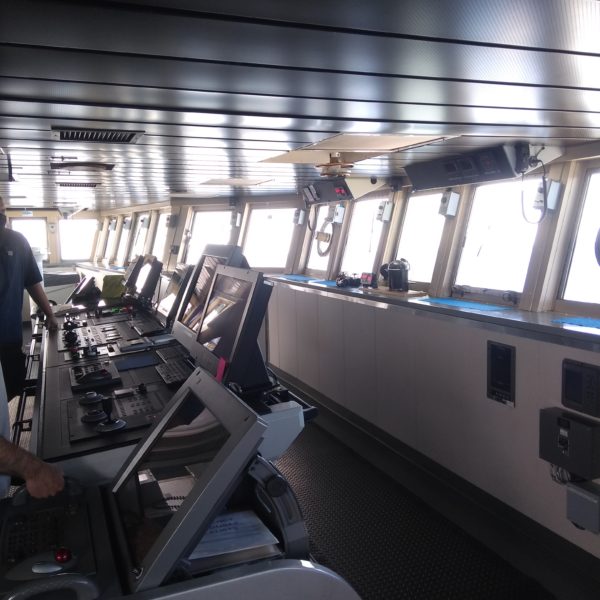
















Picture of the screens in the hydro lab showing a mat on top of a microbial mat. Credit: S. Baxstrom, University of Washington, V’ 22

Titrating water samples from Oregon Shelf and Oregon Offshore sites for oxygen analysis. Credit: S. Baxstrom, University of Washington, V’ 22.
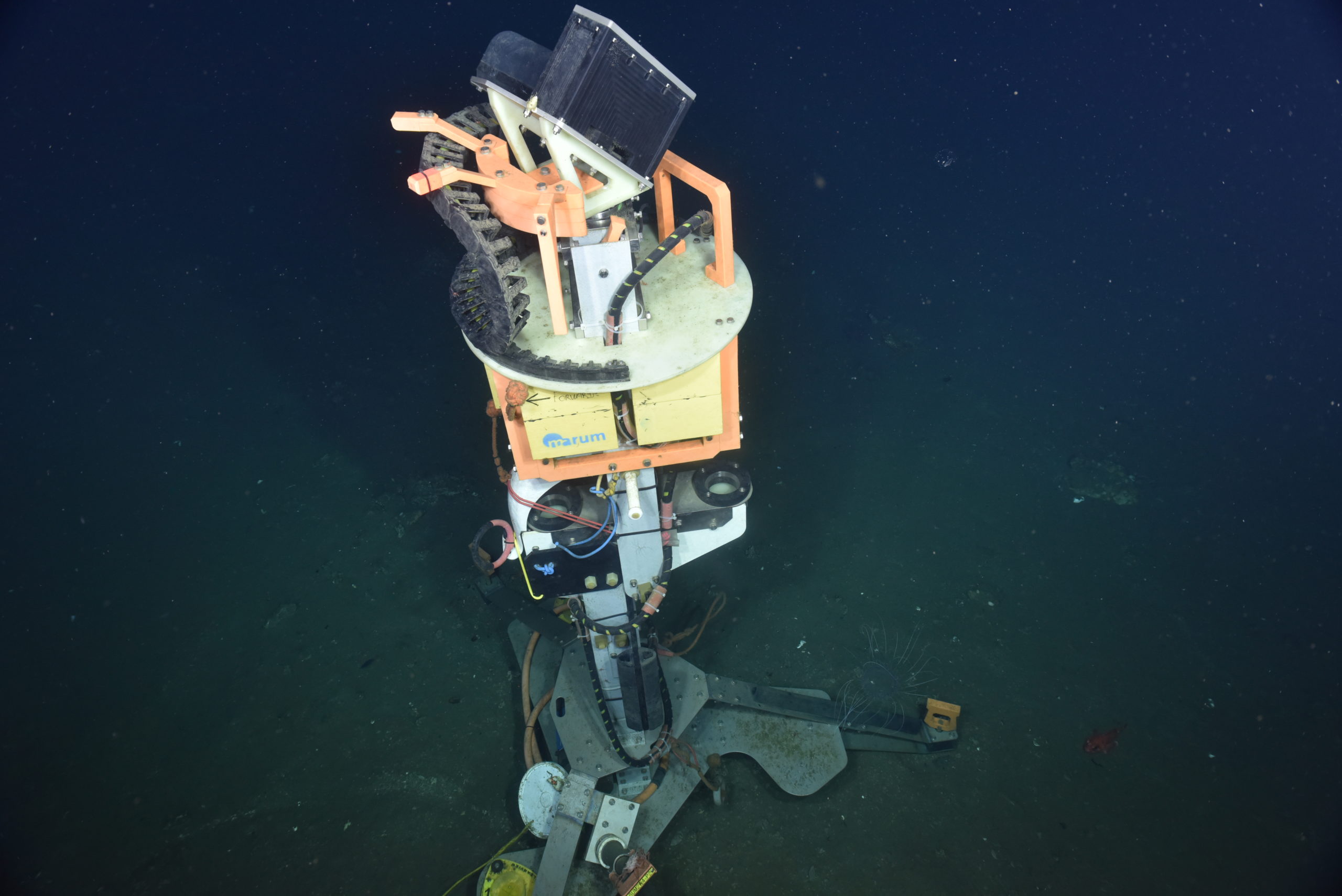
The MARUM Germany Overview Sonar at the seafloor, in need of a little troubleshooting. UW/NSF-OOI/CSSF; Dive R2223; V22

A sliver of moon peaking from the darkness. Credit: N. Wu, University of Washington, V22

Shrunken decorated Styrofoam cup. Credit: K. Whitmer, University of Washington, V22.

Pacific White-Sided Dolphins. Credit: K. Whitmer, University of Washington, V22.

CTD Rosette being lifted into the water at Slope Base. Credit: K. Whitmer, University of Washington, V22.

Mat (that was apparently made in the USA) on a microbial mat. Credit: UW/NSF-OOI/CSSF; V22.

Filtering station. Credit: K. Whitmer, University of Washington, V22.

One of the engines in the R/V Thomas G. Thompson engine room. Credit: K. Whitmer, University of Washington, V22.

Titrations! Credit: K. Whitmer, University of Washington, V22.

: Mostly overcast weather as we transit to the offshore site. Credit: K. Whitmer, University of Washington, V22.

On the ship bridge. Credit: J. Pineda, University of Washington; V22.

CTD rosette just pulled out of the water, ready for sampling. Credit: J. Pineda, University of Washington; V22.
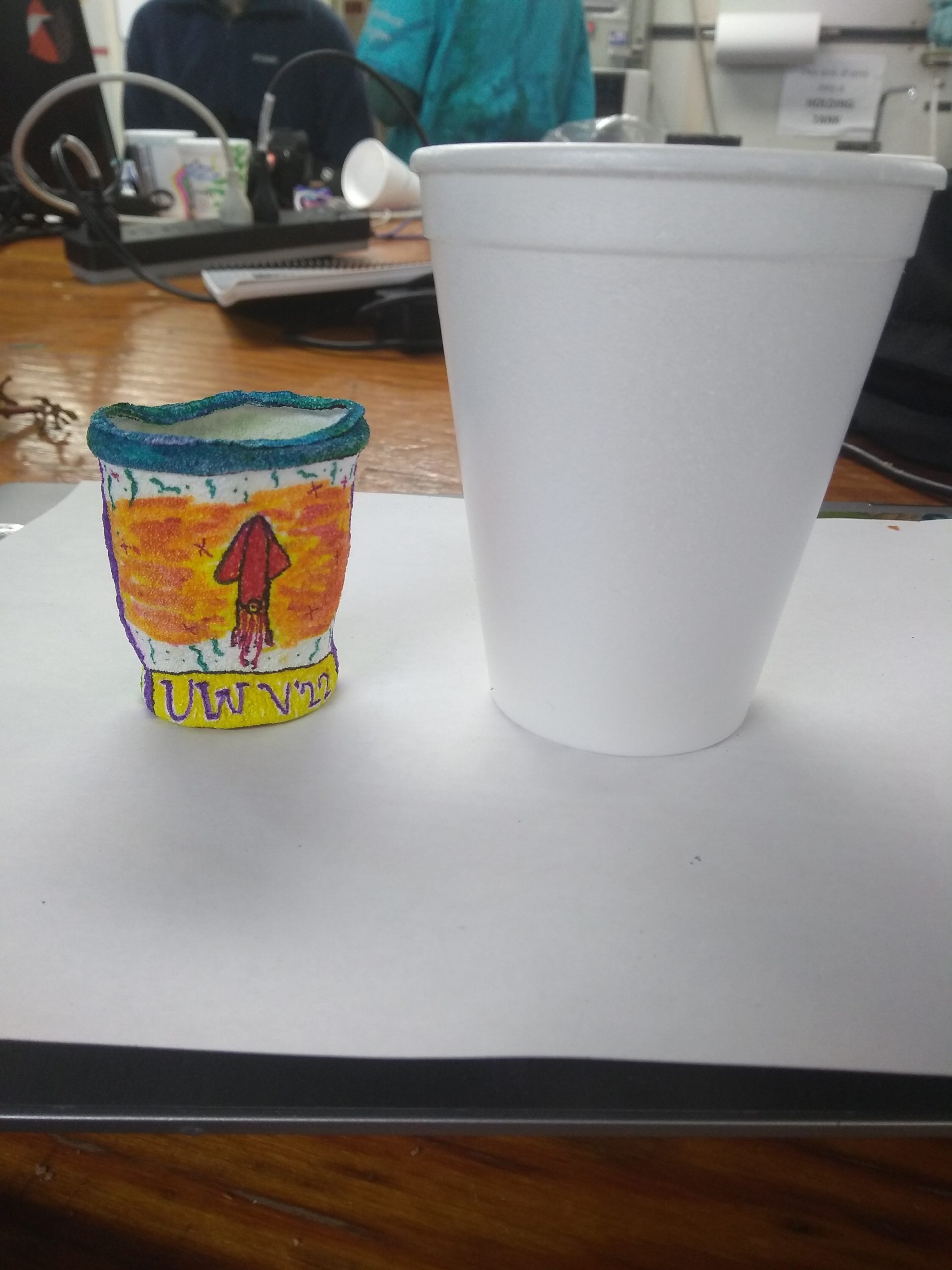
Pressure-shrunken Styrofoam cup next to a normal cup. Credit: J. Pineda, University of Washington; V22.

ROPOS instrument recovery from underneath sediment with brittle stars on surrounding seafloor. Credit: J. Pineda, University of Washington; V22

View inside the ROPOS watch room with methane bubbles on main screen. Credit: J. Pineda, University of Washington; V22.

Southern Hydrate Ridge rocks collected by ROPOS. Credit: J. Pineda, University of Washington; V22.

Dispensing my seawater samples into a beaker to be distributed into individual bottles for preservation. Credit: N. Wu, University of Washington; V22.

Co-Chief Scientist Julie Nelson guiding us through seawater collection from ROPOS Niskin bottles. Credit: J. Pineda, University of Washington; V22.
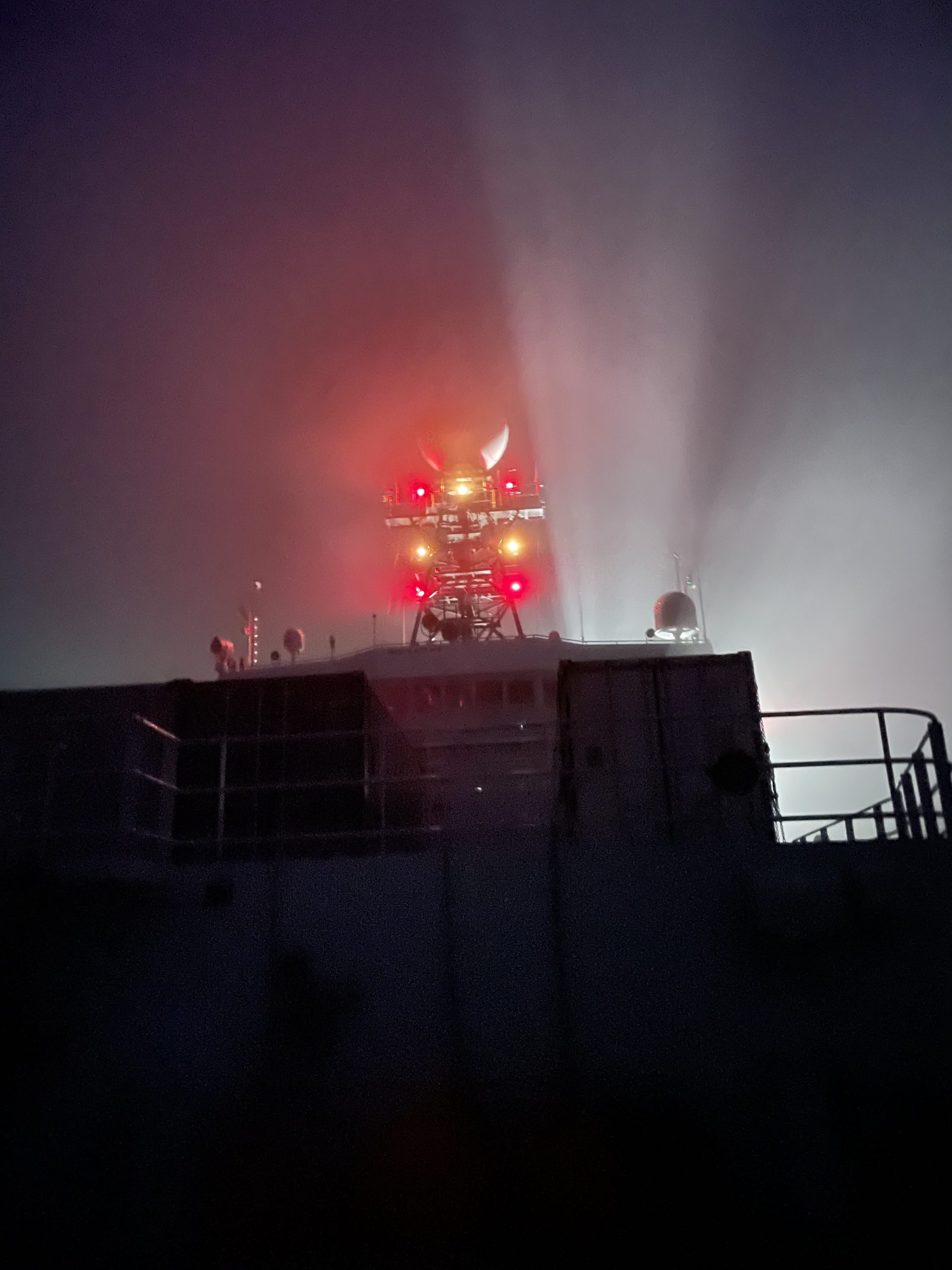
Bridge of the R/V Thompson in the early morning fog. Credit: G. Diephuis, University of Washington, V22.

ROPOS arm freeing osmotic water sampler from tool basket. Credit. UW/NSF-OOI/CSSF, V22.

Dahl’s dolphins from the deck of the R/V Thompson. Credit: G. Diephuis, University of Washington, V22.
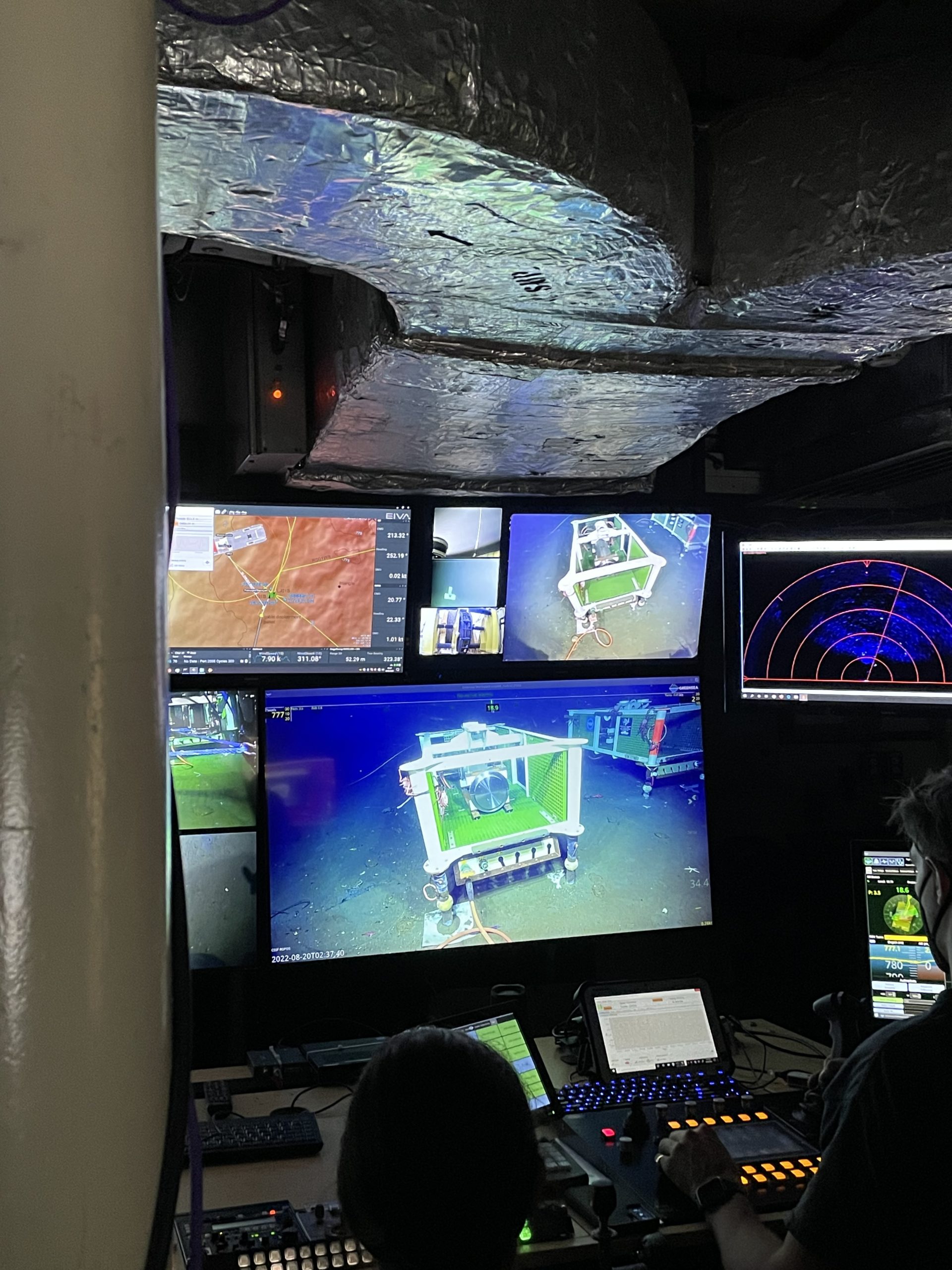
ROPOS control room seeing the old LV01B secondary node on the screen. Credit: G. Diephuis, University of Washington, V22.

Shrunken cup from ~2900 m vs. normal cup of original size. Credit: A. Rose, University of Washington; V22.

ROPOS adjusting a cable with a sea star on it. Credit: UW/NSF-OOI/CSSF; V22.

The “guts” of ROPOS. Credit: A.Rashid, University of Washington, V22

Pacific White-Sided dolphins. Credit: A. Rashid, University of Washington, V22.
- Anemone
- Animal
- Arthropod
- ASHES
- Axial
- Axial Base
- Axial Biology
- Axial Caldera
- Bacteria
- Basalt Lava
- BEP
- Biofouling
- biolgoy
- Biology
- Camds
- Camera
- Camhd
- Central Caldera
- Ciliates
- Cnidaria
- Coastal Biology
- Crab
- Deep Profiler Mooring
- Dive Highlights
- Eastern Caldera
- Echinoderms
- Endurance Array
- Engineering Team
- ENLIGHTEN 10
- Exploratorium
- Fish
- Geology
- HD Camera
- HPIES
- Hydrate Ridge
- Hydrates
- Hydrophone
- Hydrothermal Vents
- Illustration
- Inshore 80 Meters
- Instrument
- International District
- J-BOX
- Jason
- Jellyfish
- Junction Box
- K12
- Lava
- Mollusk
- Moorings
- Nodes
- Nudibranch
- Octopus
- OOI
- Oregon Offshore
- Oregon Offshore 600 m
- Oregon Shelf
- Oregon Slope Base
- People
- PN1B
- PN1D
- Polychaetes
- PPSDN
- Primary Node
- RASFL
- ROCLS
- ROPOS
- ROPOS Dives
- ROV Team
- RV Revelle
- RV Sikuliaq
- RV Thompson
- Salp
- Sample
- SC13
- Science Team
- Sea Cucumber
- Sea Star
- Sea Urchin
- Seafloor
- Seismometer
- Sensors
- Shallow Profiler Mooring
- Shark
- Shipboard
- Shore Station
- Slope Base
- Smoker
- Soft Coral
- Southern Hydrate Ridge
- Sponge
- Squid
- Students
- Students & Guest Participants
- Tmpsf
- Tubeworms
- VISIONS 11 Leg 1
- VISIONS 11 Leg 2
- VISIONS 11 Viewers
- VISIONS 13
- VISIONS 14
- VISIONS 15
- VISIONS 16
- VISIONS 17
- VISIONS 18
- VISIONS 20
- VISIONS 22
- VISIONS 23
- Visualization
